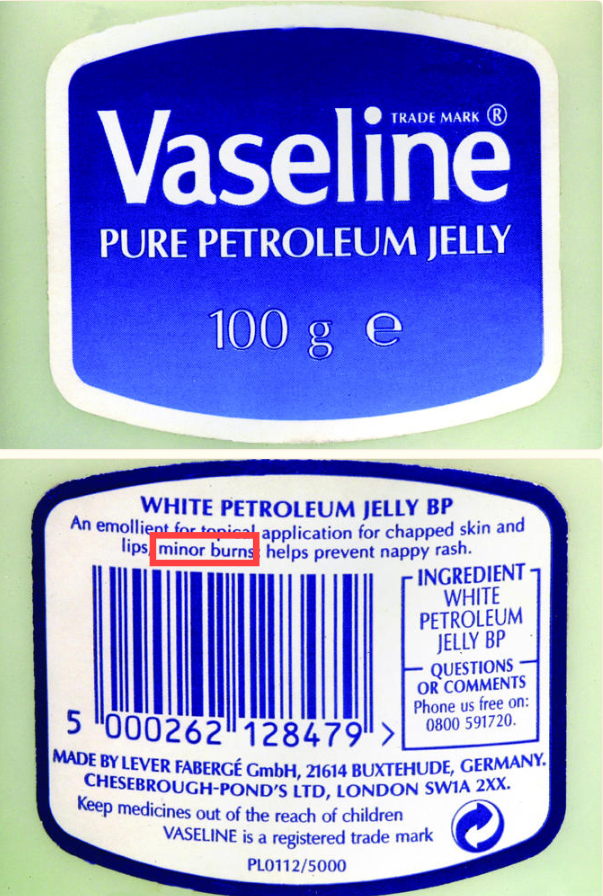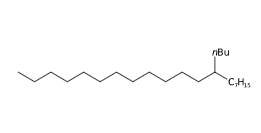| "Descrizione" by Street82 (2970 pt) | 2023-Dec-06 19:04 |
Review Consensus: 10 Rating: 10 Number of users: 1
| Evaluation | N. Experts | Evaluation | N. Experts |
|---|---|---|---|
| 1 | 6 | ||
| 2 | 7 | ||
| 3 | 8 | ||
| 4 | 9 | ||
| 5 | 10 |
Vaseline oil is obtained from Vaseline, a thick, waxy, oil-soluble chemical compound derived from petroleum, is a colloidal hydrocarbon ointment.
The name describes the structure of the molecule:
- Vaseline refers to petroleum jelly, a product derived from the refining of petroleum. Vaseline is known for its lubricating, moisturizing, and protective properties.
- oil indicates that the product is in a liquid or semi-liquid form. Oils are generally organic compounds that remain liquid at room temperature.
Raw Materials and Their Functions
Crude Oil. The primary raw material for the production of vaseline oil. Crude oil contains a complex mixture of hydrocarbons that are separated and refined to produce vaseline oil.
Industrial Chemical Synthesis of Vaseline Oil
- Distillation. The process begins with the distillation of crude oil in a refinery. During this process, crude oil is heated, and its components are separated based on their boiling points.
- Refining. After distillation, the fraction containing vaseline oil is further refined to remove impurities such as aromatic and sulfur compounds. This may include treatments like hydrogenation and adsorption.
- Quality Control and Packaging. The refined vaseline oil undergoes quality checks to ensure it meets the required standards, particularly in terms of purity and safety. After quality control, it is packaged for use in a variety of applications, including cosmetic and pharmaceutical products, and as a lubricant in various industries.
It appears as a light to yellowish-coloured liquid. Practically insoluble in water, in ethanol (96%) and in glycerol. slightly soluble in methylene chloride.

What it is used for and where
Vaseline Oil is a refined petroleum product used in various sectors, including cosmetics, pharmaceuticals, and industrial applications. The most common uses are shown below:
Medical
Topical skin moisturising and lubricating agent. A bioactive glass preparation with gold nanoparticles and 18% Vaseline demonstrated strong vascular proliferation and complete wound regeneration by accelerating a strong vascular proliferation and complete wound regeneration (1). Excipient for suppositories, pharmaceutical formulations.
Cosmetics
It protects the skin through a moisturising action and contributes to the formation of collagen in the stratum corneum. As it has a melting point just above body temperature, it melts on the skin in the spaces between the cells in the lipid barrier, then stops solidifying again. It forms an occlusive barrier to the skin's natural water loss.
Other uses
- Lubrication of silk fabrics in the textile industry.
- Temporary protection of medical devices, precision instruments.
- Softener for rubber products.
- Machinery lubricant.
Safety
Do not use Vaseline on burns or fresh burns as it is not sterile, promotes bacterial growth on the wound surface and can lead to infection. (2).

The most relevant studies on the subject have been selected with a summary of their contents:
Caratteristiche tipiche del prodotto commerciale White petroleum jelly
| Appearance | White, translucent, soft unctuous mass |
| Congealing Point | 50°C to 60°C |
| Drop melting Point | 57°C-60°C |
| Flash Point | 190°C |
| Acidity/Alkalinity | 0.5 ml of 0.01M NaOH |
| Density | 0.81-0.88 |
| Drop Point | 35-70°C |
| Cone Penetration | 130-210 (0.1mm) |
| UV Light Absorption | 0.5 (290 nm) |
| Residue on ignition | 0.02% |
| Sulphated Ash | 0.05% |
| Polycyclic aromatic hydrocarbons | 0.090 (265-420nm) |
| Specific Gravity @ 25°C | 0.860 to 0.890 |
| Consistency @ 25°C | 180-200 dmm |
| Kinematic Viscosity@99°C | 10.5 |
 |  |
- Formula molecolare C15H15N
- Peso molecolare 209.292 g/mol
- CAS 8009-03-8
- EC Number: 232-373-2
- MDL number : MFCD00147839
- NACRES NA.21
- SMILES CCCCCCCC(CCCC)CCCCCCCC(CCCC)
Synonyms:
- Petrolatum
- Petroleum jelly
- Jelly, Paraffin
- 2,3,3-trimethylbenzoindolenine
- 1,1,2-trimethylhydrobenzo[e]indole
- 1,1,2-Trimethyl-1H-benzo(e)indole (2,3,3-Trimethylbenzo(4,5)indole)
- 1H-Benz(e)indole, 1,1,2-trimethyl-
- SCHEMBL31583
References_____________________________________________________________________
(1) Mârza, S. M., Magyari, K., Bogdan, S., Moldovan, M., Peştean, C., Nagy, A., ... & Papuc, I. (2019). Skin wound regeneration with bioactive glass-gold nanoparticles ointment. Biomedical Materials, 14(2), 025011.
Abstract. The bioactive glasses can lead to the promotion of growth of granulation tissue, while the gold nanoparticles (AuNPs) can induce the acceleration of wound healing including tissue regeneration, connective tissue formation, and angiogenesis. The aim of this study was to evaluate the impact of using the bioactive glass (BG) and BG-AuNPs composites on skin wound healing in experimental rat models for 14 days. Sol-gel derived BGs and BG-AuNPs composites mixed with Vaseline at 6, 12 and 18 wt% were used to evaluate the repair response of the skin. During the process of healing, granulomatous reaction was observed in the wound treated with 12 and 18 wt% BG-Vaseline ointments. Furthermore, a strong vascular proliferation and complete wound regeneration were found in 18%BG-AuNPs-Vaseline treated groups. The results derived from the performed investigations revealed that the 18% BG-AuNPs-Vaseline ointment is a promising candidate for wound healing applications.
(2) De Souza BA, Furniss D, Olaofe G, Jawad M. Vaseline and burns: vaseline should not be used as first aid for burns. BMJ. 2003 Nov 29;327(7426):1289; discussion 1289. doi: 10.1136/bmj.327.7426.1289.
| Evaluate |

